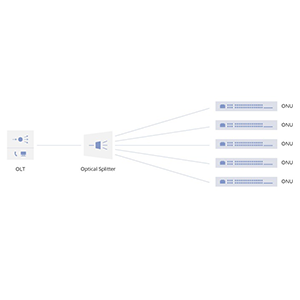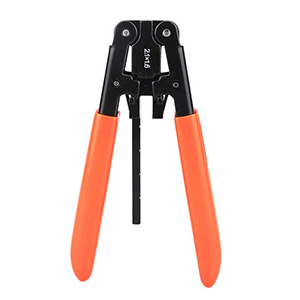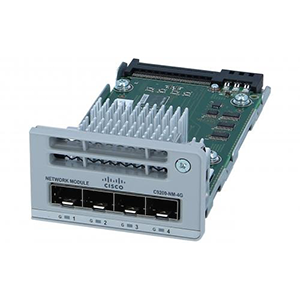As someone interested in high-speed data transmission technology, I am very excited to introduce you to SFP+ cables. SFP+ cables are small inter-module connecting cables used for high-speed data transmission. In this article, I will introduce you to the basic principles, types and characteristics of SFP+ cables, as well as its applications in areas such as data center networks and storage networks.
SFP+ Cable Introduction
Definition and rationale:
SFP+ (Small Form-factor Pluggable Plus) cable is a small inter-module connection cable, usually used for high-speed data transmission, such as connections between network devices, storage devices and servers. It uses the SFP+ interface, which is an upgraded version of the SFP (Small Form-factor Pluggable) interface, providing higher data transfer rates and performance.
SFP+ cables are based on fiber optic or copper cable technology and can support many different types of transmission media, including fiber optic and copper cables. It offers a flexible and interchangeable connectivity solution with its small size, hot-swappable capabilities and high-speed transmission capabilities.
Standard specifications:
Relevant specifications and requirements for SFP+ cables are mainly defined by the following standards:
-
SFF-8431: SFF-8431 is a standard developed by the SFF (Small Form Factor) Committee, which specifies the requirements for the mechanical dimensions, electrical characteristics, and optical performance of the SFP+ interface. This standard ensures interoperability between SFP+ modules and cables produced by different manufacturers.
-
IEEE 802.3ae: IEEE 802.3ae is a specification that defines 10 Gigabit Ethernet (10GbE) in the Ethernet standard. It includes definitions and requirements for the SFP+ interface, making it a common interface to support 10GbE data transmission.
These standard specifications ensure the consistency and interoperability of SFP+ cables, making devices and cables from different manufacturers compatible with each other.
It should be noted that SFP+ cables are generally divided into two types: fiber optic cables and copper cables. Fiber optic cables are suitable for long-distance transmission and applications with high interference immunity requirements, while copper cables are suitable for short-distance transmission and lower-cost applications. Therefore, when selecting SFP+ cables, you need to choose the appropriate cable type based on specific application needs and environmental conditions.
SFP+ cable types
Active and Passive:
SFP+ cables can be divided into active and passive types, mainly based on whether the cable contains electronic chips and optical modules.
-
Active type: Active SFP+ cable is also called optical cable, which integrates optical modules and electronic chips. This kind of cable can actively adjust the power of signal transmission and reception, and has high signal quality and stability. Active optical cables are typically used for long-distance transmission, such as data center-to-data center connections or across floors, and in applications that require high performance and immunity to interference.
-
Passive: Passive SFP+ cable is also called copper cable and does not contain optical modules and electronic chips. It uses copper wires for signal transmission and has no active signal conditioning. Passive copper cables are typically used for short-distance transmission, such as connections between servers or within cabinets. They are generally more affordable and suitable for low-cost and low-power applications.
Direct connection type and transfer type:
SFP+ cables can also be divided into direct connection type and transfer type. These two types mainly involve the use and connection method of the cable.
-
Direct-connect type: Direct-connect SFP+ cables are used to establish direct connections between devices, such as between servers or between switches and servers. Direct-connect fiber optic cables connect by plugging directly into the device’s SFP+ interface, without the need for additional adapters or modules.
-
Adapter type: Adapter type SFP+ cables are used to connect different types of devices or interfaces and require adapters or modules to achieve compatibility. Transition cables are typically used to convert an SFP+ interface to another type of interface, such as an SFP+ interface to a fiber optic port or an Ethernet port.
The appropriate SFP+ cable type needs to be selected based on specific application needs and device compatibility. Active optical cables are suitable for long-distance transmission and high-performance applications, and passive copper cables are suitable for short-distance transmission and low-cost applications. Direct-connect optical cables are suitable for direct connections between devices, while transfer optical cables are suitable for connecting different types of devices or interfaces.
Features and advantages of SFP+ cables
High speed transmission:
SFP+ cables are designed to meet high-speed data transmission needs and can support a variety of different transmission rates, including but not limited to 10Gbps, 25Gbps, etc. This makes SFP+ cables ideal for handling large data volumes and high bandwidth needs. It can provide fast and reliable data transmission and is suitable for data centers, enterprise networks and communication systems that require high-speed connections.
Flexibility and scalability:
SFP+ cables are flexible and scalable to suit the connection needs of different network devices and topologies. Its small size and hot-swappable capabilities allow it to be easily installed and replaced without disrupting the operation of the entire system. SFP+ cables also support a variety of transmission media, including fiber optic and copper cables, making them suitable for different network environments and distance requirements.
In addition, the interchangeability of SFP+ cables is one of its advantages. According to the SFF-8431 standard, the dimensions, electrical characteristics, and optical performance of SFP+ interfaces and cables are standardized, thereby ensuring interoperability between SFP+ modules and cables produced by different manufacturers. This means users can choose SFP+ modules and cables from different vendors to meet their specific needs without being locked into a specific vendor.
Application areas of SFP+ cables
Data center network:
SFP+ cables are widely used in data center networks to achieve high-speed connections between servers and interconnection of network devices. In data centers, servers require fast, reliable communication to support large-scale data processing and high-performance computing. SFP+ cables provide high-speed data transmission capabilities and can meet the connection needs between servers within the data center. It can be used to connect servers to network devices such as switches, routers, and storage devices, supporting high-density interconnection within the data center.
Storage network:
SFP+ cables also have important applications in storage networks. Storage networks include SAN (Storage Area Network) and NAS (Network Attached Storage), which are used to connect storage devices and servers to achieve high-speed transmission and sharing of data. SFP+ cables can be used to connect storage devices (such as storage arrays) and servers, providing high-speed, low-latency data transmission channels. It can meet the bandwidth and performance requirements of storage networks and support large-scale data storage and access.
In addition to data center networks and storage networks, SFP+ cables are also widely used in other fields. For example, it can be used for high-speed connections in corporate networks, connecting devices on different floors or in different offices. It can also be used in telecommunications operators’ optical networks to connect optical switches, optical transmission equipment and optical fiber user terminals.
Technical parameters and performance of SFP+ cable
Transmission distance and medium:
The transmission distance and applicable media of SFP+ cables can vary depending on the specific size and type. In general, SFP+ cables support the following transmission distances and media:
Optical fiber media: SFP+ cables can use optical fiber as the transmission medium and support different transmission distances, such as:
-Short Reach: generally within a range of tens of meters to more than a hundred meters.- Medium Reach: generally within a range of several hundred meters to more than a thousand meters.
- Long Reach: Generally within the range of several kilometers to tens of kilometers.
-
Copper cable medium: SFP+ cables can also use copper cables as the transmission medium, which is suitable for short-distance transmission, usually within the range of a few meters to more than ten meters.
Specifications and Connectors:
SFP+ cable specifications and connector types vary depending on the specific type and application. Major specifications and connector types include:
-
SFP+ optical module (SFP+ Optical Transceiver): This cable uses SFP+ optical module as the interface of the transmission device. The optical module usually has an LC connector. SFP+ optical modules can realize high-speed optical signal transmission through optical fiber media and support different transmission distances and wavelengths.
-
SFP+ DAC (Direct Attach Copper) cable: This cable is a passive copper connector with an SFP+ connector on one end and a copper cable on the other end. SFP+ DAC cables are suitable for short-distance connection needs, providing a low-cost and low-power solution.
It is important to note that the specifications and performance of SFP+ cables may vary between different vendors and models. When selecting and using SFP+ cable, choose the appropriate size and connector type based on specific application needs, device compatibility, and expected transmission distance.
SFP+ cable selection and deployment considerations
Environmental requirements:
When selecting and deploying SFP+ cables, consider the following environmental requirements:
-
Temperature range: SFP+ cables should be able to operate normally within the temperature range of their environment. Different SFP+ cable products may have different temperature specifications, such as commercial grade, industrial grade, automotive grade, etc. According to the actual application scenario, select a suitable temperature range to ensure the reliability and stability of the cable.
-
Electromagnetic interference: Electromagnetic interference may exist in certain environments, such as high-voltage equipment, electromagnetic radiation sources, etc. In this case, SFP+ cables with good immunity to electromagnetic interference should be selected to ensure the stability and reliability of data transmission.
-
Mechanical strength: SFP+ cables need to be used in various physical environments, including cabinets, connections between devices, etc. Therefore, the mechanical strength of the cable is crucial. Choose a cable with a durable outer shell and appropriate tensile strength to ensure it can withstand mechanical stress during installation and use.
Compatibility considerations:
When selecting SFP+ cables, consider their compatibility with different makes and models of network equipment to ensure interoperability and proper functionality. Here are some compatibility considerations:
-
Standard compliance: Make sure the selected SFP+ cable complies with industry standards, such as SFF-8431 and SFF-8472. These standards specify the dimensions, electrical characteristics, optical performance, etc. of SFP+ interfaces and cables, ensuring interoperability between SFP+ modules and cables produced by different manufacturers.
-
Device Compatibility: When selecting SFP+ cables, it is important to understand the compatibility requirements of the network devices you need to connect. Different devices may have specific requirements for the type of cable, supported transmission rates, and distance. Make sure the cable you choose is compatible with the target device to avoid compatibility issues and performance degradation.
-
Manufacturer support: If there are specific network equipment brand or supplier requirements, it is recommended to consult the equipment manufacturer or supplier to obtain their suggestions and recommendations on cable compatibility. They can provide certified cables for their devices or give specific compatibility recommendations.
Summarize:
SFP+ cables have the advantages of high-speed transmission and flexibility, and are suitable for the connection needs of various network devices and topologies. It is used in data center networks to achieve high-speed connections between servers and interconnection of network devices, and also plays an important role in storage networks.
When selecting and deploying SFP+ cables, factors such as environmental requirements and compatibility need to be considered to ensure stable transmission performance and interoperability. Hopefully, this article has provided you with valuable information about SFP+ cables and helped you better understand and choose a suitable high-speed data transmission solution.
- What cable is used for SFP+?
- What is SFP+ DAC cable?
- Can I use SFP+ cable for SFP?
- What is the range of SFP+ cable?
- Can I plug RJ45 into SFP+?
- Is SFP+ compatible with RJ45?
- Is SFP+ better than RJ45?
- Is SFP+ a fiber channel?
- What is the difference between SFP+ and DAC cable?




